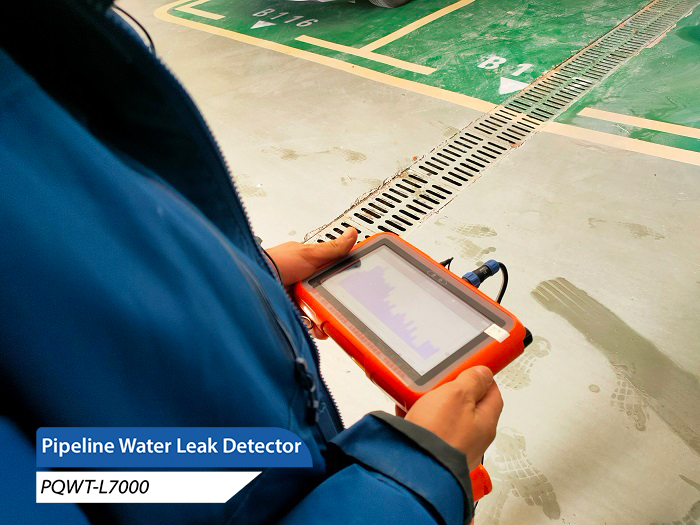In modern water supply pipeline systems, water leakage is a common and challenging problem. To address this issue, the pipeline leak detector listening method has become one of the most commonly used leak detection methods on the market. This method utilizes sound wave detection technology to accurately locate pipeline leakage points, providing a reliable basis for timely repair.

The principle of generating water leakage sound waves
When the water supply pipeline operates at a certain pressure, if it is damaged and causes leakage, water will escape from the damaged point due to the pressure difference between the inside and outside of the pipeline. The escaping water flow has a certain velocity and will rub against the pipe wall, resulting in two mechanical motion processes:
1. Vibration formation: The viscosity and initial velocity of water cause friction with the pipe wall, resulting in vibration.
2. Wave propagation: These vibrations propagate in the form of waves along the pipeline to both sides. According to wave theory, this type of wave belongs to linear waves, and its sound source is the leakage point.
The sound energy (sound intensity) generated by leakage will decay exponentially, and its attenuation coefficient is related to the elastic modulus of the propagation medium, the magnitude of water pressure, and the frequency of sound waves.
The working principle of listening method
The pipeline leak detector uses sound waves generated by detecting pipeline leaks to locate water leakage points. The specific steps are as follows:
1. Sensor captures sound waves: The pipeline leak detector is equipped with a high-sensitivity sensor that can capture weak sound waves generated by pipeline leaks.
2. Signal amplification and processing: The captured sound wave signal is amplified and digitized to filter out environmental noise and retain useful leakage signals.
3. Positioning the leakage point: By analyzing the intensity and frequency changes of the sound wave signal, the detector can accurately determine the location of the leakage point.
The advantages of listening method
1. High precision: The listening method can capture weak water leakage sound waves, ensuring the accuracy of the detection results.
2. Non destructive testing: It is possible to locate the leakage point without damaging the ground and walls, reducing the impact on the environment and building structure.
3. Fast and efficient: The pipeline leak detector can quickly locate leakage points, significantly improve detection efficiency, shorten repair time, and reduce losses caused by leakage.
Practical application
The listening method is widely used in urban water supply systems, industrial pipeline systems, and household water supply systems. For example, in urban water supply systems, technicians use the pipeline leak detector listening method to quickly locate pipeline leakage points and repair them in a timely manner, ensuring the normal operation of urban water supply. In industrial pipeline systems, this method helps enterprises avoid production accidents and environmental pollution, and improves production safety and stability.
Technological Innovation and Future Development
With the continuous advancement of technology, the pipeline lead detector listening method will further combine intelligence and IoT technology to achieve real-time online monitoring and remote data transmission. In the future, pipeline leak detectors will become more intelligent and precise, providing stronger guarantees for the safe operation of various pipeline systems.
The pipeline leak detector listening method, as an efficient and accurate leak detection method, can quickly and accurately locate the leak point by capturing and analyzing the acoustic signals generated by pipeline leaks. Its high precision, non-destructive testing, and fast and efficient advantages have made it widely used in various pipeline systems. With the continuous development of technology, the pipeline lead detector listening method will provide more reliable guarantees for the safe operation of water supply systems and industrial pipeline systems.








